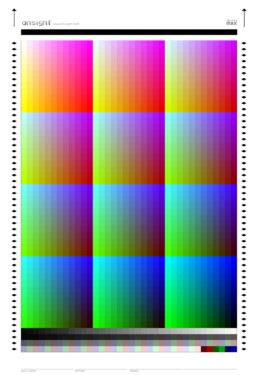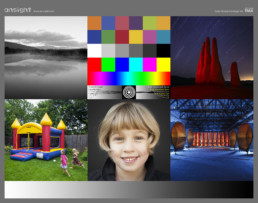The final RIP calibration step is profiling. If the base calibration steps performed beforehand aren’t done properly, you won’t get a get profile. But even if the previous steps are performed perfectly, there is a surprising amount of profiling variables that are important to discuss to ensure we get the best ICC profile possible. ChromaMax targets use bottom weighted patches that allow us to characterize deep shadow color better than traditional targets that distribute patches evenly throughout the tonal range. In the same fashion, its important that we create profiling targets that are also bottom weighted with the right amount of patches. It is better to use a target with a smaller amount of well-placed patches than it is to use a target with lots of poorly placed patches. We have become geeks at making our own profiling targets with visually arranged patches that allow us to analyze the base calibration and its tonality better than randomly generated patches do.
The separation parameters are also important. We have a test that allows us to determine the sweet spot GCR setting that minimizes ink usage and metamerism effects without causing graininess. And the right Perceptual rendering allows for exceptional edge gamut color reproduction that you can’t get with other rendering intents. Put simply, the default settings in any given profiling software often produce “good enough” results but mastering these variables allows us to achieve *optimal* results.
Email us if you’d like to talk more about profiling or ChromaMax calibration at your location.



